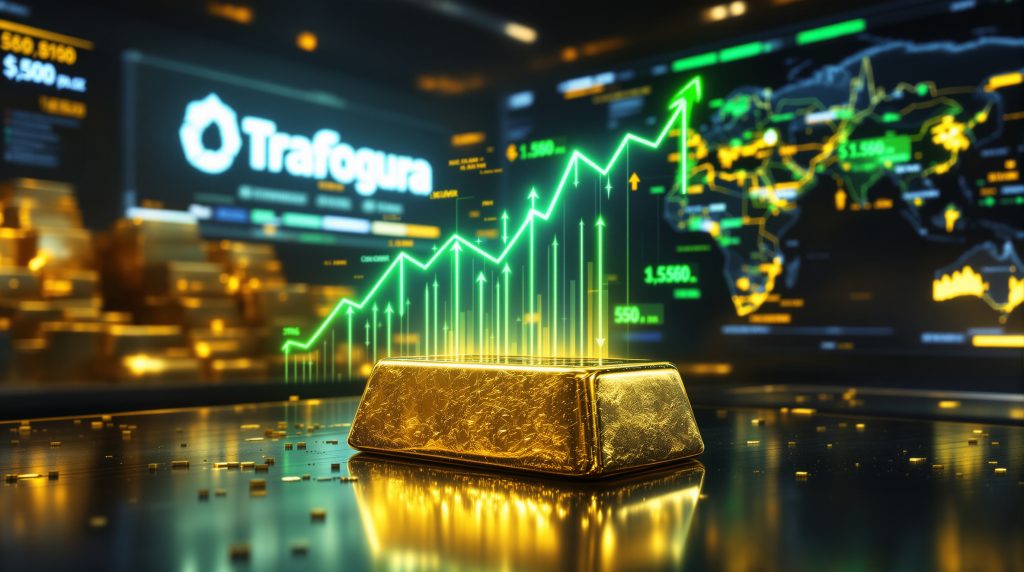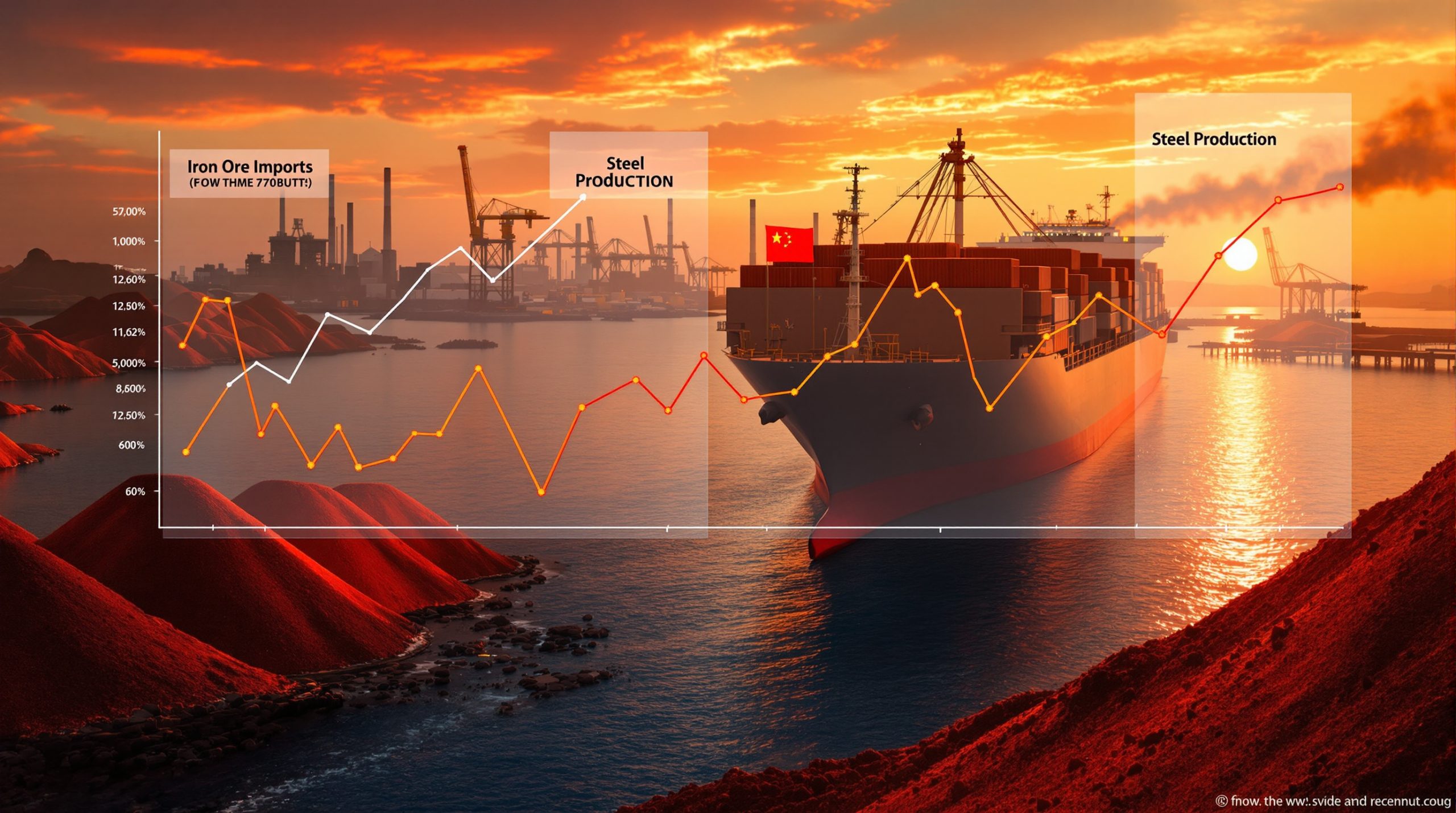Trafigura's Strategic Expansion into Precious Metals Trading: What You Need to Know
As gold and silver markets experience significant price surges, Trafigura, one of the world's largest commodity trading houses, is strategically positioning itself to capitalize on these opportunities. This expansion marks a significant shift in the precious metals trading landscape, with potential implications for miners, refiners, and competing traders alike.
What is Driving Trafigura's Move into Gold and Silver Markets?
Record-Breaking Precious Metal Prices Create New Opportunities
Gold prices have surged over 25% in 2025, reaching gold all-time highs above $3,500 per ounce. This remarkable growth has been driven by increasing global economic uncertainty and geopolitical tensions that have reinforced gold's status as a safe-haven asset.
Silver has outperformed even gold with a more than 30% increase, reaching decade-high prices. This dual performance in precious metals presents a compelling opportunity for commodity trading giants looking to diversify their operations and revenue streams.
The price movements aren't merely short-term fluctuations. UBS recently raised its gold price forecast to $3,600 per ounce for Q1 2026, suggesting a continued bullish outlook on precious metals.
These record-breaking prices have transformed precious metals into significant profit drivers for commodity trading houses, creating ideal market conditions for experienced traders to capitalize on price movements and volatility.
Strategic Diversification Amid Industry Competition
Commodity trading giants are actively using their substantial cash reserves to diversify into new markets where they can access major clients, structure innovative financing deals, and secure valuable supply and offtake agreements.
Trafigura faces particular pressure to maintain high profit levels following a wave of senior executive departures. These departures have increased the financial burden associated with the company's commitment to buying back shares from departing executives.
The company also faces growing competition as other energy-focused traders like Vitol Group, Mercuria Energy, and Gunvor Group return to increasingly volatile markets for copper and aluminum, traditional strongholds for Trafigura.
Expanding into precious metals provides Trafigura with access to new client relationships and financing structures, potentially offsetting competitive pressures in other sectors.
Who Has Trafigura Recruited to Build Their Precious Metals Desk?
Strategic Talent Acquisition from Specialist Firms
In the past couple of months, Trafigura has made three strategic hires to establish its precious metals trading capabilities:
- Joseph Bou Sleiman, hired from precious metals specialist MKS Pamp SA
- Xavier Miserez, brought on board from the precious metals sector
- Maxime Piccot, recruited from OCIM to strengthen the trading team
These specialized hires demonstrate Trafigura's commitment to building genuine expertise rather than simply extending existing commodity trading operations into precious metals.
The new team will operate under Trafigura's existing copper trading division, focusing specifically on semi-processed gold and silver doré trading—a strategic starting point that leverages the company's existing strengths.
Organizational Structure and Reporting Lines
The new precious metals desk has been positioned within copper trading operations, creating a strategic alignment that leverages Trafigura's established expertise in metal concentrates.
This structural decision isn't merely administrative—copper concentrates often contain smaller amounts of gold, while silver is frequently found with zinc and lead. By placing precious metals trading within the copper division, Trafigura can capitalize on natural synergies across its metals portfolio.
The organizational positioning also allows the company to leverage its extensive logistics and financing capabilities, which will be crucial for success in the specialized precious metals market.
While initially focused on semi-processed materials, this structure positions Trafigura to eventually expand into refined bullion markets as the team establishes itself and builds market presence.
How Will Trafigura's Approach Differ from Traditional Precious Metals Traders?
Focus on Semi-Processed Materials and Concentrates
Trafigura's initial focus will be on gold and silver doré—semi-processed bars produced at mine sites that require further refining before reaching commodity-grade standards. This approach differs significantly from traditional precious metals traders who primarily deal in refined bullion.
This strategy allows Trafigura to leverage its position as the world's largest trader of metal concentrates, creating natural synergies with its existing business. Copper concentrates often contain smaller amounts of gold, while silver is frequently found in zinc and lead concentrates.
By focusing on these semi-processed materials, Trafigura creates a bridge between mining operations and refineries, positioning itself as a valuable intermediary in the supply chain.
Potential Expansion into Refined Bullion Markets
While initially focusing on doré, Trafigura's future plans may include trading of refined gold and silver bars. This would place the company in direct competition with the traditional bullion market dominated by large global banks.
This expansion would present both opportunities and challenges. Banks operate with very low financing costs, creating a significant competitive hurdle for new entrants like Trafigura. However, the company's trading expertise and global logistics network could offset these financing disadvantages.
The refined bullion market represents a significant potential expansion that would complement Trafigura's initial focus on semi-processed materials, creating a more comprehensive precious metals trading operation.
Supply Chain Integration Opportunities
Trafigura's entry into precious metals trading creates potential to develop direct relationships with artisanal and small-scale miners, a growing source of the world's gold supply that larger refiners often avoid due to reputational concerns.
The company appears willing to undertake enhanced due diligence for these challenging supply sources, potentially opening new supply channels that competitors might avoid.
Trafigura's ability to structure financing deals for producers represents another significant advantage, particularly for smaller operations that may struggle to access capital through traditional channels.
This approach creates opportunities to establish major supply and offtake agreements, further strengthening Trafigura's position in the precious metals supply chain.
What Market Factors Make This Expansion Particularly Timely?
Macroeconomic and Geopolitical Drivers
Tariff wars and global geopolitical tensions have significantly boosted demand for haven assets like gold, driving prices to record levels. With gold market surge near $3,500 per ounce as of August 2025, the market presents exceptional opportunities for experienced traders.
Silver prices have reached their highest levels in over a decade, driven by both investment demand and industrial applications. Unlike gold, which is primarily an investment metal, silver's dual usage creates additional trading opportunities.
UBS's recent decision to raise its 2026 gold price forecast to $3,600 per ounce for Q1 2026 signals continued optimism about precious metals markets, supporting the case for Trafigura's expansion.
These macroeconomic factors create an ideal environment for Trafigura to establish and grow its precious metals trading operations, potentially benefiting from continued price strength and volatility.
Operational Challenges and Opportunities
Gold's unique transportation requirements present both challenges and opportunities. Unlike most commodities, gold bars are flown rather than shipped internationally and require significantly higher security to prevent theft.
These specialized requirements create barriers to entry for smaller traders, potentially limiting competition and creating profitable niches for well-capitalized firms like Trafigura that can invest in appropriate security and logistics infrastructure.
Much of what's produced by top miners is sold directly to refiners, creating intermediary opportunities for traders who can establish relationships with both producers and refiners.
A growing share of the world's gold supply comes from artisanal-scale producers, creating opportunities for traders willing to navigate the enhanced due diligence requirements these sources demand.
How Does This Move Fit into Trafigura's Broader Business Strategy?
Leveraging Existing Trading Infrastructure
Trafigura traded 21.9 million tons of refined nonferrous metals and raw materials in 2024, demonstrating its extensive experience and existing infrastructure in metals trading.
This established presence provides a solid foundation for expansion into precious metals, with many operational aspects overlapping with the company's current activities.
Existing relationships with mining companies can be leveraged for precious metals sourcing, creating natural synergies and business development opportunities.
Trafigura's global logistics network, already capable of handling complex international shipments, provides the foundation for managing the specialized transportation requirements of precious metals.
Financial Considerations
The company is strategically deploying its cash reserves to enter high-margin trading segments, with precious metals representing a potentially lucrative diversification opportunity.
Share buyback commitments from departing executives have created additional profit pressure, making expansion into high-margin business lines particularly important.
Diversification into precious metals reduces Trafigura's exposure to volatility in any single commodity market, creating a more balanced and resilient business model.
Precious metals trading typically offers higher margins than bulk commodities, making it an attractive growth area for a company looking to enhance profitability in an increasingly competitive environment.
What Are the Potential Challenges and Risks?
Market Entry Barriers
Entering the precious metals market means competing with established banks and specialized traders who have deep expertise and established client relationships.
The higher security requirements for bullion transportation and storage require significant investment and specialized knowledge, creating operational challenges for new entrants.
Regulatory compliance across multiple jurisdictions adds complexity, with precious metals subject to stringent oversight due to their high value and potential for illicit activities.
Building credibility with refiners and end-users takes time, potentially limiting initial transaction volumes and market impact.
Supply Chain Due Diligence
Working with artisanal mining sources presents significant reputational risks that require robust due diligence processes to mitigate.
Compliance with responsible sourcing standards has become increasingly important for precious metals, with growing scrutiny from regulators, NGOs, and end-users.
Verification of origin for conflict-free supply chains presents technical and logistical challenges, particularly for material sourced from regions with governance challenges.
Trafigura must carefully balance profit opportunities with ethical sourcing requirements to build a sustainable precious metals business.
Market Volatility Considerations
Precious metals markets are subject to rapid price fluctuations driven by investor sentiment, potentially creating both opportunities and risks for traders.
Central bank policy changes can have significant impacts on gold demand, introducing an element of political risk to trading activities.
Industrial demand fluctuations affect silver prices more directly than gold, creating additional market dynamics that traders must navigate.
Currency market impacts on precious metals valuations add another layer of complexity to trading decisions, requiring sophisticated risk management approaches.
What Does This Mean for the Broader Precious Metals Market?
Competitive Landscape Shifts
The entry of a major commodity trader could increase liquidity in certain market segments, particularly for semi-processed materials and concentrates where Trafigura will initially focus.
Existing market participants may face pressure on trading margins as competition intensifies, potentially leading to consolidation among smaller players.
Mining companies may benefit from new financing structures that emerge as Trafigura seeks to establish supply relationships, potentially improving capital access for producers.
Artisanal and small-scale miners could see increased competition for their output, potentially improving pricing and market access for these smaller operations.
Market Structure Implications
Trafigura's entry represents a blurring of lines between traditional commodity trading and banking activities, continuing a trend of convergence in financial commodity markets.
Direct producer-to-end user supply chains may become more common as large traders establish integrated precious metals operations that span the entire value chain.
Smaller mining operations may gain improved market access through relationships with commodity traders willing to work with less established producers.
The integration between concentrate and refined metal markets could deepen, creating more pricing transparency and operational efficiency across the precious metals supply chain.
FAQs About Trafigura's Precious Metals Expansion
What is gold and silver doré?
Doré is a semi-processed product consisting of unrefined gold and silver bars produced at mine sites. These bars typically contain 80-90% precious metals along with other elements and require further refining to reach investment or industrial grade purity standards.
Doré represents an intermediate step between raw ore and refined bullion, requiring specialized handling and processing before reaching end markets.
Why would Trafigura target doré rather than refined bullion initially?
Doré trading leverages Trafigura's existing expertise in raw materials and concentrates while avoiding direct competition with established bullion banks that enjoy significant financing advantages.
This approach creates opportunities to develop relationships with mining companies and structure financing deals, positioning Trafigura as a valuable partner rather than just another trader.
The doré market has fewer established players than refined bullion, potentially offering better margins and less intense competition for a new entrant.
How do precious metals trading margins compare to other commodities?
Precious metals trading typically offers higher margins than bulk commodities due to greater price volatility, creating more opportunities for profitable trades.
Financing arrangements represent a significant profit opportunity in precious metals, with structured deals potentially generating returns beyond simple trading margins.
Specialized market segments, particularly those requiring enhanced due diligence or involving smaller producers, often command premium pricing that can enhance profitability.
What impact might this have on gold and silver prices?
While Trafigura's entry alone is unlikely to significantly impact global precious metals prices, increased competition for mine supply could potentially reduce trading spreads and improve pricing for producers in certain regions.
Greater liquidity in semi-processed materials markets might lead to more efficient price discovery, potentially reducing volatility in these market segments.
Improved market access for smaller producers could marginally increase overall supply, though this effect would likely be limited relative to global production volumes.
Trafigura's precious metals desk brings one of the world's largest commodity traders into a relatively small pool of specialist gold and silver brokers, potentially transforming aspects of market structure and operation over time.
Disclaimer: This article contains forward-looking statements and market analysis based on current conditions. Precious metals markets are subject to significant volatility and risks. This information should not be considered investment advice. Always conduct your own research and consider consulting with a financial advisor before making investment decisions related to gold market strategies or gold-silver ratio analysis.
Interested in Spotting Major Gold and Silver Discoveries Before the Market?
Discovery Alert's proprietary Discovery IQ model instantly notifies investors of significant ASX precious metal discoveries, turning complex mineral data into actionable insights that can give you a crucial market edge. Explore why major mineral discoveries can lead to exceptional returns by visiting Discovery Alert's dedicated discoveries page.




